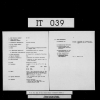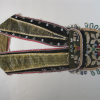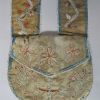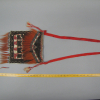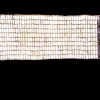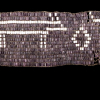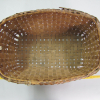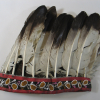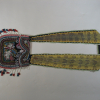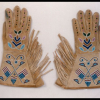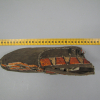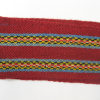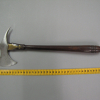Relatives/Heritage items
Displaying 1381 - 1400 of 4694 Relatives
Browsing allows you to see all the records for relatives and heritage items in the GKS. You can also search by material made, and/or filter by nations. To search by material made, type the material's name, by example 'leather', in the box below and click “Apply.” You can select multiple nations from the dropdown list by pressing “Ctrl” (on PC) or “Command” (on Mac) and clicking, then select “Apply.”
A prepared form of agreement to surrender lands undescribed with a party not specified. See IT038 - Original Surrender, IT039 - Map
Map illustrating the Mississauga surrender of 250,880 acres of land located north of Lake Ontario and east of the Etobicoke River. Known as the Toronto Purchase. See IT038 - Surrender, IT040 - Surrender Copy
Shoulder bag with rattle snake skin appliqued to shoulder strap and beaded images of Misshipeshu on the bag flap; worn at the meeting with the Prince of Wales held at Sarnia in July 1860. Possibly made by awassiki-siko-kkwe (Wasigezeegoqua), wife of Maungwudaus and mother of
This black smoked hide bag has also been described as a hunting pouch. There is a triangle flap with appliqued quillwork and jingle cones, with red-dyed deer or moose hair. There are plant motifs growing from the bottom of the bag, with curls at the
Shoulder bag made in the 1860s-1870s of deer hide, dyed quills, silk tape and size 12 seed beads. This item is referred to as a belt pouch; however, it is not worn folded over a belt as is usually indicated by this term but, rather
Hunting pouch with tassels and a red strap; attributed to Comanche, Texas; obtained in 1840.
A wampum belt, named the Four Nations Alliance Belt. From the Huron (Wendat) Confederacy. Collected by Mr. Horatio Hale from Chief Joseph White while at the Anderdon Reserve between 1872 and 1874. Purchased from Hale by Professor Tylor, who later donated the belt to the
A loom woven wampum belt, From the Huron (Wendat) Confederacy, made between 1639-1649. Called "The Jesuit Missionary Belt." Collected by Mr. Horatio Hale from Chief Joseph White while at the Anderdon Reserve between 1872 and 1874. Purchased from Hale by Professor Edward Burnett Tylor, who
Feathered headdress associated with Chief Waubano (John P. Wampum) of Moravian Reserve. Headdress consists of a headband with golden eagle feathers secured inside, sewn around the base of a woollen fabric cap. Five pointed star, and stylized floral leaf and vegetal motifs and fronds found
Shoulder bag with rattle snake skin appliqued to shoulder strap, and Haudenosaunee style floral images on beadwork appliqué of bag flap and front panel. Bag made of velvet, wool tape, silk ribbon and size 8 and 10 seed beads. Attributed to John Tecumseh Henry, worn
A Hodenosaunee headdress with beadwork applique around the bottom band. Acquired by the Woodland Cultural Centre from Jacob E. Thomas in 1973.
Soft buckskin gloves with fringed gauntlets. Curvelinear multi-colored beadwork on the hand section. Beaded American flags, birds, and double-curve motifs on the gauntlets.
Commercial knife with wooden handle and metal blade. Knife sheath made of white deer skin with fur intact that is folded over with one seam and edged with red stroud. A band of dark brown felt, embroidered with porcupine quills or moosehair, is attached to
Circular brooch made of trade silver with scalloped edges. Circular hole in the centre is surrounded by ten smaller perforated circles. Dr. Oronhyatekha Ethnology collection.
Double-knit sash with fringe. Made with a thicker dyed wool yarn, red predominating. Stripes, wavy or zig-zag lines, and herringbone motifs. Dr. Oronhyatekha Ethnology collection.
 Knowledge Sharing Platform
Knowledge Sharing Platform


